Drivers expect their car displays to be intuitive, provide fast feedback, display clear and rich content, and be interconnected with mobile devices. However, meeting these requirements while also complying with the stringent automotive environment demands a comprehensive integration of technologies. During the manufacturing process, Xinhongtai Technology's display designers and technical engineers comprehensively consider factors such as the display's operating temperature, shock resistance, waterproofing, and the need for customized touch functionality, providing tailored solutions for different vehicle application scenarios.
Since vehicles may be driven in different seasons and at different latitudes, in-vehicle displays must be able to operate normally within a wide temperature range. Therefore, temperature resistance is a fundamental quality. The current industry requirement is that the display screen must be able to withstand temperatures ranging from -40°C to 85°C.
The center console display screen should be visible to the driver and passengers (including those in the back seat).
Picture quality requires a comprehensive balance, particularly focusing on the realism and harmony of the image. This concept is known as HDR (High Dynamic Range). Its practical effect is that bright areas become brighter, while dark areas become darker, allowing for excellent display of details in both bright and dark areas.
Smart cars, especially autonomous vehicles, need to collect road information in real time and provide timely alerts to drivers at critical moments. Rapid response and refresh rates prevent information lags and are crucial for warning indicators and navigation features such as real-time maps, traffic updates, and backup cameras.
In simple terms, automotive displays must support a design and production cycle of at least five years, which should be extended to 10 years due to vehicle warranties. Ultimately, the display's service life should be at least as long as the vehicle's.
It is crucial that the driver can easily read the information on the display in varying ambient light conditions, from bright sunlight to complete darkness.
High resolution means that there are more pixels per unit area, and the overall picture is clearer.
Contrast ratio is defined as the ratio of maximum brightness (full white) to minimum brightness (full black). Generally speaking, the minimum contrast ratio acceptable to the human eye is about 250:1. A high contrast ratio is beneficial for seeing the display clearly in bright light.
High-resolution displays may need to upgrade from 18-bit red, green, and blue (RGB) to 24-bit RGB to achieve a wider color gamut. A wide color gamut is a very important indicator for improving display quality.
In-vehicle displays provide critical vehicle information to drivers, and their visibility must not be reduced by ambient light conditions (especially during daytime sunlight). Of course, the anti-glare coating on their surface must not hinder visibility ("flicker" interference must be eliminated).
Anti-electromagnetic interference requires EMC performance to resist electromagnetic interference.
Depending on the placement, the types of display screens in cars are divided into central control display screen, LCD instrument panel, head-up display, co-pilot and rear seat entertainment screen, side view screen, rearview mirror screen, etc.
A dashboard is an essential part of a car's display screen, capable of displaying the car's status to the driver, including information such as mileage, RPM, fuel consumption, door status, and seatbelt status. Every car has this type of display because drivers must clearly understand the car's status for safe and smooth driving. A car's dashboard only requires simple display functionality.
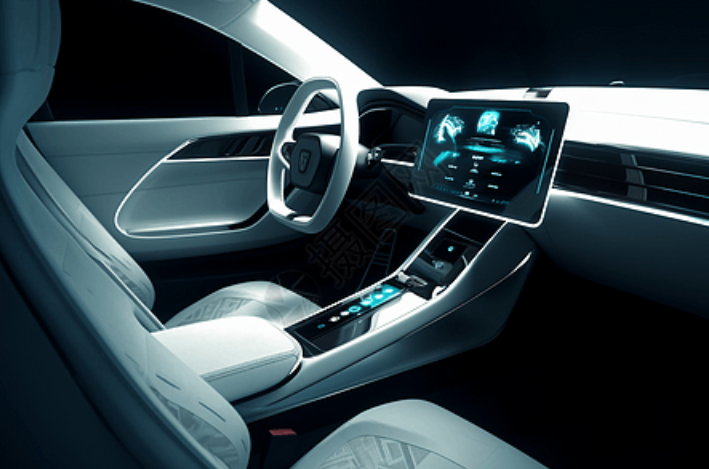
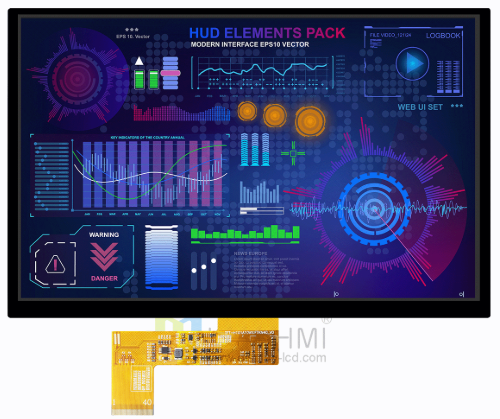
Ultra-high brightness (1000 cd/m²) for clear viewing in sunlight.
High resolution (1280x800)
IPS full-viewing angle technology
HD resolution (1280x800, WXGA)
10.1-inch optimized size
Wide temperature range and stable operation (-20°C to 70°C)
The TFT-H101A10WXIFTKN40 is more than just a screen; it's a professional in-vehicle display solution that combines high-definition visuals, comprehensive noise immunity, and wide-temperature durability. Its high-brightness IPS widescreen ensures a premium visual experience, while its automotive-grade reliability guarantees a long and stable lifecycle in harsh environments. It's an ideal choice for next-generation smart car cockpit central control screens, passenger entertainment screens, and digital instrument clusters.
The display screen has evolved from an optional feature to a standard feature of dashcams, and its role goes far beyond simply playing back videos. It significantly enhances the user experience and functionality of the product.
Module:LCM-TFT043T6SVHDVN20Z
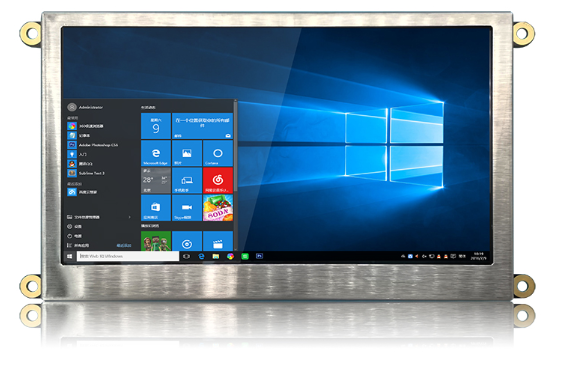
Product Features:
High-definition image quality, unparalleled detail: 800×480 pixel resolution delivers crisp, detailed images.
IPS technology for full viewing angles, allowing for flexible viewing angles.
HI driver-free architecture (no external driver IC required) greatly simplifies PCB design, saving space and reducing costs.
The center console display has the highest penetration rate and is also the most basic type of display. It provides driver assistance features like reversing images and navigation, controls in-car devices like the air conditioning and audio system, and serves as an entertainment system. It offers multimedia entertainment, music, videos, radio, podcasts, and more. The navigation system includes online maps, real-time traffic conditions, and intelligent route planning. Vehicle settings include driving mode selection, air conditioning control, seat adjustment, ambient lighting, and driver assistance system settings. Connectivity features include mobile screen projection (Apple CarPlay/Android Auto), Bluetooth phone calls, and in-car Wi-Fi.
Product Features:
This 15.6-inch TFT LCD display utilizes IPS technology with a full-viewing angle of 1920×1080 Full HD resolution, delivering crisp, detailed images suitable for viewing from any angle. Its brightness reaches 1000cd/m², ensuring excellent visibility even in bright sunlight. Its wide operating temperature range of -30°C to 85°C adapts it to various automotive environments. It utilizes an LVDS interface and a 30-pin FPC connector for reliable and stable operation. At only 11.9mm thick, its compact design makes it easy to integrate into the vehicle's central control system, providing a premium display experience.
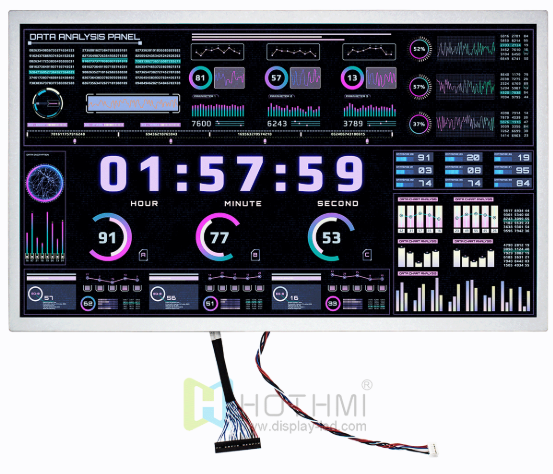

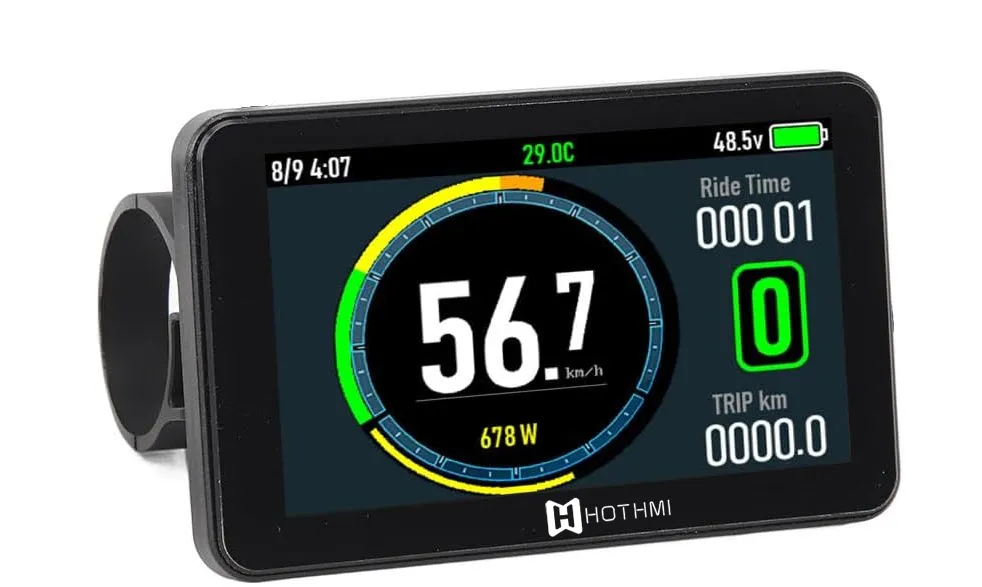
For E-Bikes (smart electric bicycles/electric-assisted bicycles), users often require displays that provide essential riding data, power assist mode display, cadence, output power (wattage), calorie consumption, riding time, and other auxiliary information. Additionally, they require navigation, connectivity, vehicle status, and diagnostics to facilitate interaction between rider and vehicle. In contrast, for electric motorcycles/high-performance motorcycles, users prioritize high visibility, integration, and safety. Different riding requirements determine the performance level of the display. The following summarizes key parameters to consider when selecting displays for E-Bikes and electric motorcycles.
Feature Dimensions | E-Bike (Mid-to-High-End) | Motorcycle (mid-to-high-end) | Core Requirements |
Screen Type | Color TFT display | High-brightness TFT / premium OLED | Color, response speed |
Core Functions | Speed, battery level, power assist mode, navigation | Speed, RPM, electronic control status, full-function navigation | Comprehensive information, easy to read |
Brightness | 500-1000 nits | 1000-1500+ nits | Sunlight readability |
IP Rating | IP65 / IP67 | IP67 / IP69K (high-pressure water jet resistant) | Waterproof and dustproof |
Operating Temperature | -20°C to 70°C | -30°C to 85°C | Wide operating temperature |
Touchscreen | Capacitive (regular or glove compatible) | Must have a capacitive touchscreen that supports glove and wet hand operation | 24/7 operation |
Key Differentiation | Focus on power assist mode and riding data | Emphasizes electronic control system interaction and mobile screen projection (CarPlay/AA) | Deep integration with vehicle performance |
Answer: The display itself is waterproof. To prevent water droplets from affecting the operation of the display, the waterproof function of the cable should be considered. When connecting the display to the control panel, the customer is required to take waterproof measures on the cable and other contact interfaces, such as applying silicone waterproofing method, etc.
Answer: Every Hot Display product undergoes an electrostatic test before leaving the factory to minimize the risk of the display being "charged" before leaving the warehouse!
Answer: Full lamination is preferred for automotive displays. Full lamination is recommended for most touchscreen displays, as it offers excellent stability and minimizes rework. While many competitors outsource the lamination process to other companies, Hot Display has its own lamination team, capable of independently and comprehensively completing the entire production process.
Answer: Every display screen shipped from Xinhongtai undergoes electrostatic discharge (ESD) testing, group pulse EFT testing, vibration testing, high and low temperature impact testing, product aging testing, and tensile testing. For more information, please click the link: What inspection items should be done before the display screen leaves the factory?
A: Because cars must withstand extreme outdoor weather, Hot Display, a manufacturer specializing in industrial-grade displays, can customize the temperature of our displays to meet customer needs. We can also offer wide-temperature options, with a maximum temperature range of -40°C to 80°C. The applicable temperature inside a car is generally -10°C (in winter) to 70°C (in summer), so Hot Display's displays are fully compatible with a wide range of vehicles.